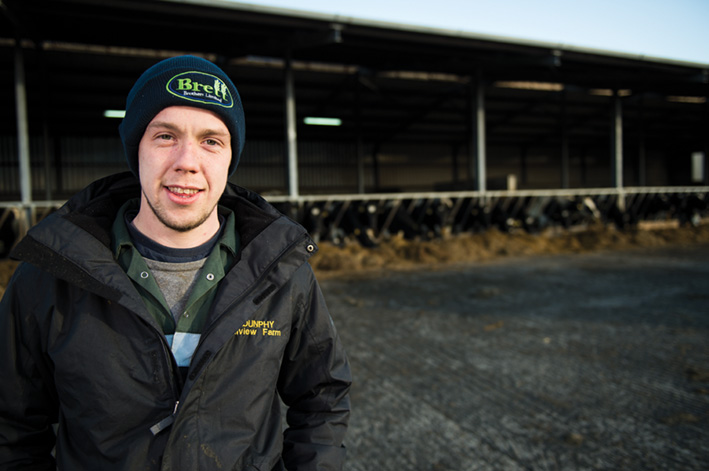Actisaf delivers consistent performance for beef finisher…
Consistency is everything for Colm Dunphy, who farms with his father Michael in County Laois, Ireland. Along with a herd of over 100 dairy cows they finish around 200 Friesian cattle each year. Calves are bought in at 3 weeks of age and are bucket fed whole milk until about 8 - 10 weeks of age, at which point they are weaned and eating around 2kg of concentrate/head/day.Plainer calves and later calves are left entire, whilst those that are performing well will be castrated. Young bulls and steers are then paddock grazed in groups of around 40 animals in 8-9 acre blocks, changing fields each week on a 3-week cycle during the grazing season.
Colm focuses on delivering a high quality diet to optimize growth and daily gain throughout the animal’s lives. Cattle typically come into sheds in late October – early November depending on grass supply and grazing conditions.
“We try to get the feeding routine as consistent as possible for the cattle throughout the finishing period,” Colm explained. “We feed at the same time every day, the same person does the feeding - exactly the same way – so that there is as little variation as possible.”
Cattle typically finish at around 2 years of age, and reach O= and O+ grades. Around 45 days before finishing they are slowly transitioned over to a finishing diet, which comprises high quality grass silage along with barley, fodder beet, soya, straw and minerals. Typical daily intakes of around 38-39kg fresh weight are achieved in this period, which includes up to and above 20kg/head/day of fodder beet, so the ration is high in both starch and sugar.
“We have increased the level of starch and sugar in the diet based on the advice of David Lawrence, a Ruminant Support Specialist with Brett Brothers who has introduced their Brett Bovine Proform mineral pack,” Colm said. “This contains Actisaf live yeast to help rumen performance and I wouldn’t feel happy with this ration unless Actisaf performed so well, due to the high level of starch.”
“Not only do we see no grain in the dung, but dung consistency is good, cudding rates are good, and we have no sick animals nor lameness problems. We get the best of both worlds – a ration with a high inclusion of home grown ingredients like barley and fodder beet, great performance, and good rumen function thanks to Actisaf – we wouldn’t be without it.”

